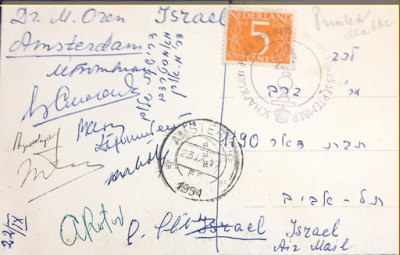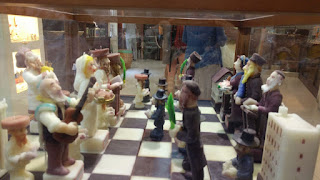We have just received a copy of Moshe Czerniak's Sefer Ha'Sachmat: Yesodot, Be'ayot Ve'Shitot (Tel Aviv: Mofet, 1967, 2nd edition). This literally translates as 'The Book of Chess: Foundations, Problems, and Systems', although the back page has the English title 'Sefer HaSahmat: Chess Strategy and Tactics'. .
It is a sturdy hardcover, #48 in part of 'Danny's Popular Science Library'. The library (i.e., series of books) was named -- says the front page -- after Daniel Mass, a war hero killed in the 1948 War of Independence, who was the publisher's son, according to Wikipedia (link in Hebrew). Wikipedia adds that the series had published a total of 84 books. They covered everything from geology to philosophy, and indeed had been written, as the back dust cover says, by 'expert professionals'.
The book itself is typical of the "old fashioned" books. The technical parts are excellent -- the book is almost 400 pages, covering all aspects of chess and having many deeply annotated games. These include many subjects usually ignored by primers: for example 'exploiting a small advantage in the endgame' or 'the psychology of the attack'. The book has many well-known games, but Czerniak also brings to the reader's attention many contemporary (1960s) and local (Israeli) games. Obviously Czerniak worked hard in writing the book.
The one jarring point is... chess history. Czerniak often repeats (in the margins) well-worn chess anecdotes, such as the the Gibaud-Lazar 'shortest tournament game' (Tim Krabbe, Edward Winter and others had noted the game is fiction), accepting as genuine two spurious games by Napoleon, and even -- in the photographic plates opposite p. 17 -- giving a picture of a chess set allegedly 'given as a present to Alexander the Great (4th century BC) -- despite p. 17 itself claiming, correctly, that chess was probably invented in India in the 6th century AD.
That said, Czerniak also adds, with more verisimilitude, interesting first-person accounts of conversations he had with chess fans. One (p. 335) is a quote from a chess fan who explained to him why he likes Alekhine's games: 'his pieces do not retreat even when attacked'. Did Alekhine himself know of this? Wonders Czerniak.
Another anecdote, which he gives as one that he had witnesses himself, is of a 'certain player in a certain coffee house' (presumably, Czerniak is thinking of his time as a student in Paris) who would put his knight in blitz games at the corner of four squares. This would give him a piece that could control '16' [actually, 32] squares -- 'the strongest chess piece I've ever seen' (p. 77).
Not all of the anecdotes are spurious. Some are well-known ones, such as Najdorf's simultaneous records (p. 76) or his own (then) longest game (vs. Pilnik, a 191 move draw, Mar de Plata, 1950). The problem is that it is difficult to separate the wheat from the chaff.














































